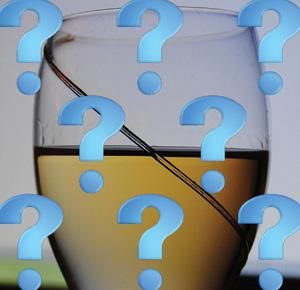Our first installation of Wine Myth Busters shed some light on a few misconceptions about our favorite fermented friend. But, that was just the tip of the iceberg, so we're bringing you more debunked myths straight from the industry experts and insiders.
Myth: Wine always gets better with age
Reality: FALSE
Expert: John Anthony Truchard, John Anthony Vineyards
"The aging of wine is a little like the ripening of an apple on the tree as there is a perfect window during which to pick. Before, it's under ripe, and after, rot sets in. So when do you drink? It depends on your preference of fruit vs. the host of unique flavors that develop with age, and the only way to figure this out is to taste a lot, and I mean a lot, of wine. The good news is that you get to drink (ok, taste) a lot of wine, under the auspice of education - how great is that?! One trick with 5-15 year-old wines: Leave a half bottle unprotected overnight and if it's better the next day, the wine will likely continue to age for 3 - 5+ years. If it's different, but still tastes good, then you likely have few years left. If it's worse, then invite your friends over for a party and drink up Johnny!"
Myth: Years with perfect weather produce the best vintages
Reality: FALSE
Expert: Peter Mondavi Jr., Charles Krug
“Many of the so-called 'great' years in Napa Valley are linked to great weather, and wines may be acclaimed because of excess ripeness. Warm weather results in accelerated ripening and sometimes excess ripeness in the grapes, which, in turn, results in high alcohol in the wines. Those warm weather attributes: more sugar, high alcohol, and resultant jamminess and port-like characteristics can be impressive in a wine’s youth but sometimes results in wines that don’t have long or bright futures. Without the structure that a longer, gentler growing season can bring, the wine can suffer over the long term. 1998, for example, was a year the critics panned for Napa cabernet. But, consider the Charles Krug Vintage Selection Cabernet, the winery’s flagship wine. Charles Krug’s VS cabernet from 1998 is showing beautifully now, and maybe even better than the ‘97 which was made in a 'stellar' year. So, 'great' years and riper, higher sugar/higher alcohol wines are not always better."
Myth: Smelling the cork will tell you about the wine's quality
Reality:FALSE
Expert: Kelly Fleming, Kelly Fleming Wines
“Smelling the cork will only make you look moronic. It's good to check the cork visually to ensure there is no discoloration or evidence of wine leakage or mold. But, smell and taste the wine itself to determine if it's drinkable.”
Myth: Screw caps are only for inexpensive wines
Reality: FALSE
Expert: Tony Biagi, Winemaker, CADE Winery/PlumpJack Winery
"We released our 1997 vintage with a screw cap in 2000. We made a conscious decision to bottle our highest end PlumpJack Reserve Cabernet Sauvignon off of our PlumpJack Estate vineyards, because we had become disheartened with the high level of cork failure in keeping the wine in pristine condition. Corks have been known to cause at least a 10% wastage of wine, not only due to the "cork taint" as a result of TCA, but also due to leakage and oxidation. To us, this was unacceptable and thus we embarked on our "experiment" and from 2000 on we have bottled every vintage of the PlumpJack Reserve Cabernet under 50% screw cap and under 50% cork. What we have found from many years of methodical sensory testing is that most people actually prefer the taste of the wines that were bottled under screw cap. It seems that this closure not only insures that the wine will not be "corked," but that it also allows the wine to age in such a manner that the fruit is better preserved and the wines more appealing. We have subsequently also used screw caps for our CADE Howell Mountain project as well."
Myth: A good winemaker can make great wine from mediocre grapes
Reality: False
Experts: Pete & Lorna Opatz, Founders Route 128 Winery
"Growers know that grapes express the qualities of the region’s terroir: Location, climate, vineyard design, and cultural practices. This equals the level of wine quality potential. Winemakers know “you can make average wine from great grapes; however, you cannot make great wine from average grapes.”
Myth: Rot on grapes (Botrytis) is always bad news
Reality: FALSE
Expert:Shauna RosenblumHead Winemaker, Rock Wall Wine Company
"2011 was a season riddled with botrytis! The entire Napa Valley had fruit melting from the vines weeks before harvest would normally be over. So, that makes botrytis seem like a pretty bad thing, but in fact, sometimes it is a great thing. When our 2008 Late harvest Sauvignon Blanc arrived, it was full of botrytis to the point that it looked like a bin full of moldy newspaper that I had no intention of putting in my press. I had never seen botrytis like that before, and it was quite off-putting. My Dad told me to have some faith and press it. I did, and this golden, honey elixir started pouring into the press pan. It was absolutely delicious, and now I have faith that botrytis in Late harvest wines, is not only good, it’s the secret ingredient."
Heard any "facts" about wine that you think may just be bad juice? leave a comment below and we'll debunk or confirm in Wine Myth Busters 3.
Photo courtesy of Dave McLear
Related Articles
